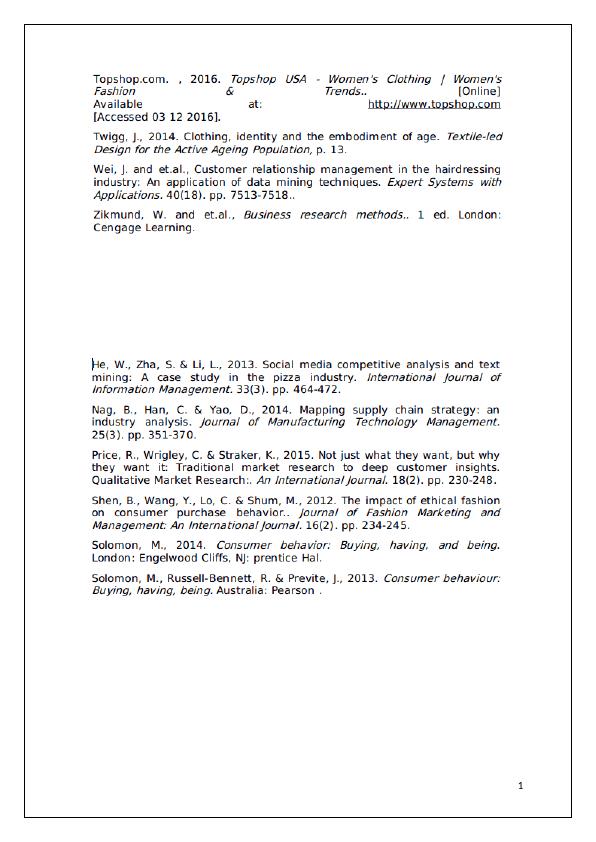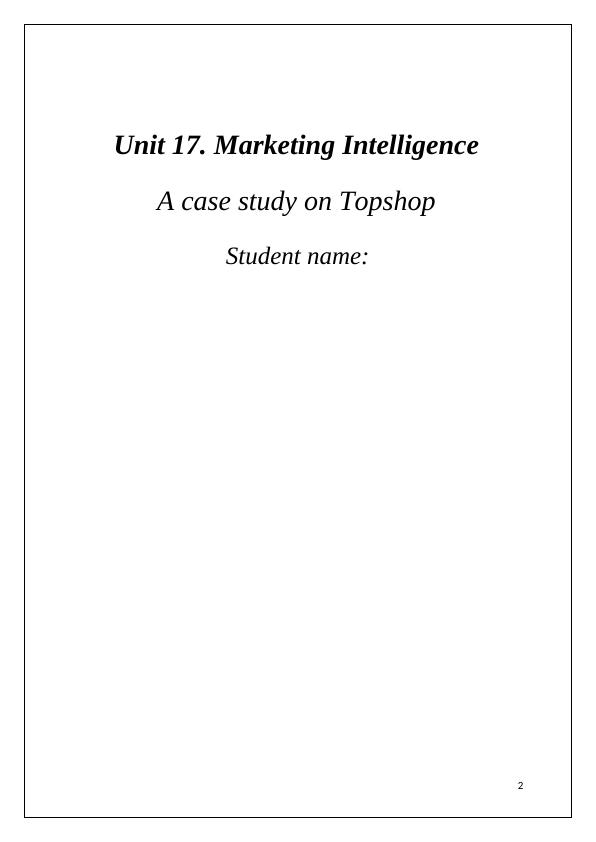Unit 17 Marketing Intelligence : Case Study on Topshop
Added on 2020-06-03
18 Pages4536 Words31 Views
1

Unit 17. Marketing IntelligenceA case study on TopshopStudent name: 2

Table of ContentsIntroduction:..........................................................................................................................................3Task 1: Understand buyer behaviour and the purchase decision- making process.................................31.1Describe the main stages of the purchase decision-making process.......................................31.2Two theories of buyer behaviour...........................................................................................51.3 Three factors that affect buyer behaviour....................................................................................51.4 Evaluation of the relationship between brand loyalty, corporate image, and repeat purchase......6Task 2: Be able to use marketing research techniques...........................................................................62.1 Evaluate different types of marketing research techniques..........................................................62.2 Use of Secondary data to achieve marketing research objectives................................................72.3 Validity and reliability of market research findings.....................................................................72.4 Plan the marketing research process to obtain market data..........................................................8Task 3: Be able to assess market size and future demand......................................................................83.1 Market size and market trends for fashion industry.....................................................................83.2 Competitor analysis of the organisation.......................................................................................93.3 Opportunity and threats for the new product of the organisation...............................................10Task 4: Be able to measure customer satisfaction...............................................................................104.1 Two techniques to assess customer response towards the product.............................................104.2 Customer satisfaction survey to evaluate the customer satisfaction rate....................................114.3 Discussion of customer satisfaction survey of the organisation.................................................14Conclusion:..........................................................................................................................................14References...........................................................................................................................................153

Introduction: The report is concerned about the customer behaviour and their effect on business. toformulate the report in a proper way the renowned brand Topshop has adopted as the casestudy. Marketing research is essential for making effective strategies and there are differenttechniques to conduct marketing research. Topshop can use different marketing researchtechniques to make effective strategies. Assessment of market demand and future demand ofcustomers from fashion industry also will be discuss in this assignment. Questionnaire forsurvey process also will be provided in this report to gather information about degree ofsatisfaction of Topshop customers. Task 1: Interpreting the stages of purchase decision- making process 1.1Describe the main phases of the purchase decision-making processThere are various stages of purchase decision-making process based on which, consumerscan make the positive decision in terms of purchasing the required products. Therefore,Topshop should focus on the vital five stages of decision-making process in order tounderstand the behaviour of customers towards the product or service and brand name. Themain stages of purchase decision-making process are given below:Need Recognition:The purchase decision-making process begins with the need recognition, whereconsumers feel that they must have definite product or service to satisfy their needs. In thiscase, consumers develop a want that they wish to fulfil [ CITATION Sol14 \l 1033 ]. Thus, thecompany make the needs or wants among consumers by producing exclusive style and newdesign products. 4

End of preview
Want to access all the pages? Upload your documents or become a member.
Related Documents
Study on Marketing Intelligencelg...
|22
|6268
|175
Marketing Intelligence Assignment Samples (Doc)lg...
|20
|4332
|37
MARKETING INTRODUCTION TABLE OF CONTENT INTRODUCTION 3 1.1: Main Stages of Purchase Decision Makinglg...
|19
|6105
|386
UNIT 17 Marketing Intelligence : Assignmentlg...
|19
|6101
|102
Marketing Intelligence Assignment- Doclg...
|16
|5101
|146
Marketing Intelligence in Topshop : Assignmentlg...
|18
|4021
|53
